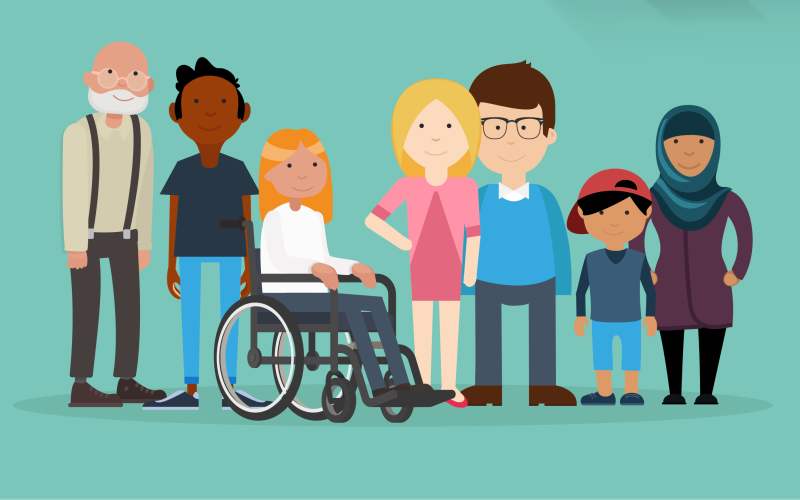Often tech is portrayed as an exciting new thing that’s about to change everything for the better. This is understandably met with scepticism and reluctance especially in healthcare systems. Healthcare professionals struggle with outdated technology and the ramifications of large failed projects that set out to revolutionise healthcare but bit off more than they can chew. Clinicians and healthcare professionals regularly encounter the parts of society that are most in need. A further concern is that technology will alienate people and make it more difficult to help those from poorer socio-economic backgrounds. Without appropriate evidence we’re left with hype, skeptism and doubt ultimately unable to understand where technology can help and where it may hinder. However we need to keep open minds, sometimes the most surprising technology can be inclusive in ways we don’t expect.
Two technologies have been popping up in the news recently. The first is eBikes - bikes with a motor used to assist peddling. Adding a motor makes it easier to peddle and less tiring - so you can travel longer distances and suffer from less fatigue. However, they are regulated by the same rules as peddle bikes and have resulted in injury, additionally dockless ebikes are clogging the streets causing disruption. The solution seems to be banning them to counter the negative societal impact. The second topical technology is virtual reality - a way of providing an artificial immersive 3D visual and auditory experience. With the development of commercial systems (eg Oculus, Samsung Gear VR, Google cardboard) and increased VR functionality on the smartphone VR is expected to become much more common. However, the concern is it will only support a small number of individuals exacerbating inequalities. Existing applications of VR in health include training by NHS England, visualising scans education, virtual training, virtual consultations and more.
Can these seemingly very different technologies actually support inclusivity in health and care and aid social prescribing?
Active lifestyles
It's well established that physical activity leads to improvements in physical and mental wellbeing. A large number those who can potentially benefit from physical activity are least able to engage. The elderly, unfit and those with chronic respiratory conditions can struggle to engage in exercise and find themselves less active which in turn exacerbates poor health e.g. frailty, heart disease, diabetes, obesity etc. However, we are starting to see an increase in the number of elderly people who are cycling enabled by ebikes. The ebike assists the peddling lowering the level of exertion needed making physical activity more accessible. Research shows improvements in physical and mental health are still realised when cycling on ebikes.
Supportive technologies like ebikes have the potential to assist physical activity and so improve wellbeing for those less fit or able. Social prescribing of physical exercise becomes more accessible by use of ebike technology which unexpectedly increases inclusivity.
Immersive technologies
Virtual Reality relies on visual perception to engage with people. It’s a simple step in logic to then assume that delivery of care through VR isolates people with visual impairment. This blog demonstrates how this assumption is false - it recounts a VR demo to the Blind Veterans UK.
Once the experience was over, I carefully removed the headset and asked the member to explain what they had seen and what it felt like. It was a humbling moment, having worked with VR for years and done thousands of demos at events, to see a genuine, positive impact upon someone. They were clearly astounded at having been able to see clearly, even the small fish rendered to swim around the diVR and the sense of scale of the whale blew them away.
https://medium.com/@vr_sam/putting-members-of-blind-veterans-uk-into-vr-3c3e84f7af63
The link above reflects on how people with visual impairment were able to visualise VR images. It's astounding to think conditions such as glucoma or convergence issues can be overcome with VR.
Visual impairment is a scale, there's complete blindness at one side of the spectrum and minor perception issues at the opposite end. Counterintuitively digital therapeutics where software is used to improve health and change behaviour (currently distributed through smartphones) can be made more accessible by creating VR content. VR makes digital therapeutics and therapies that rely on visual engagement more accessible to populations that would previously have been excluded from such interventions. VR may also be an approach for digital powered social prescribing to address social isolation in home bound and elderly people.
Accessible technologies supporting health in unexpected ways
On initial consideration technology can seem to isolate individuals or negatively impact health and wellbeing. However it’s important to understand that it’s a more complex picture and technologies need to be examined openly and in depth. Technologies such as VR have potential to improve access to new ways of delivering care that may not be identified initially. Similarly technologies like ebikes can be a public hazard but they also enable physical activity for those that would otherwise be unable to particpate.
It's easy to see just one side of the coin and miss the potential and unexpected benefits of a technology. A healthy dose of scepticism combined with an open mind and willingness to experiment in a safe way will help us to navigate the complexities to develop evidenced technology that has positive impact.
Enjoyed this post? Get in touch Twitter or LinkedIn to share your thoughts!

